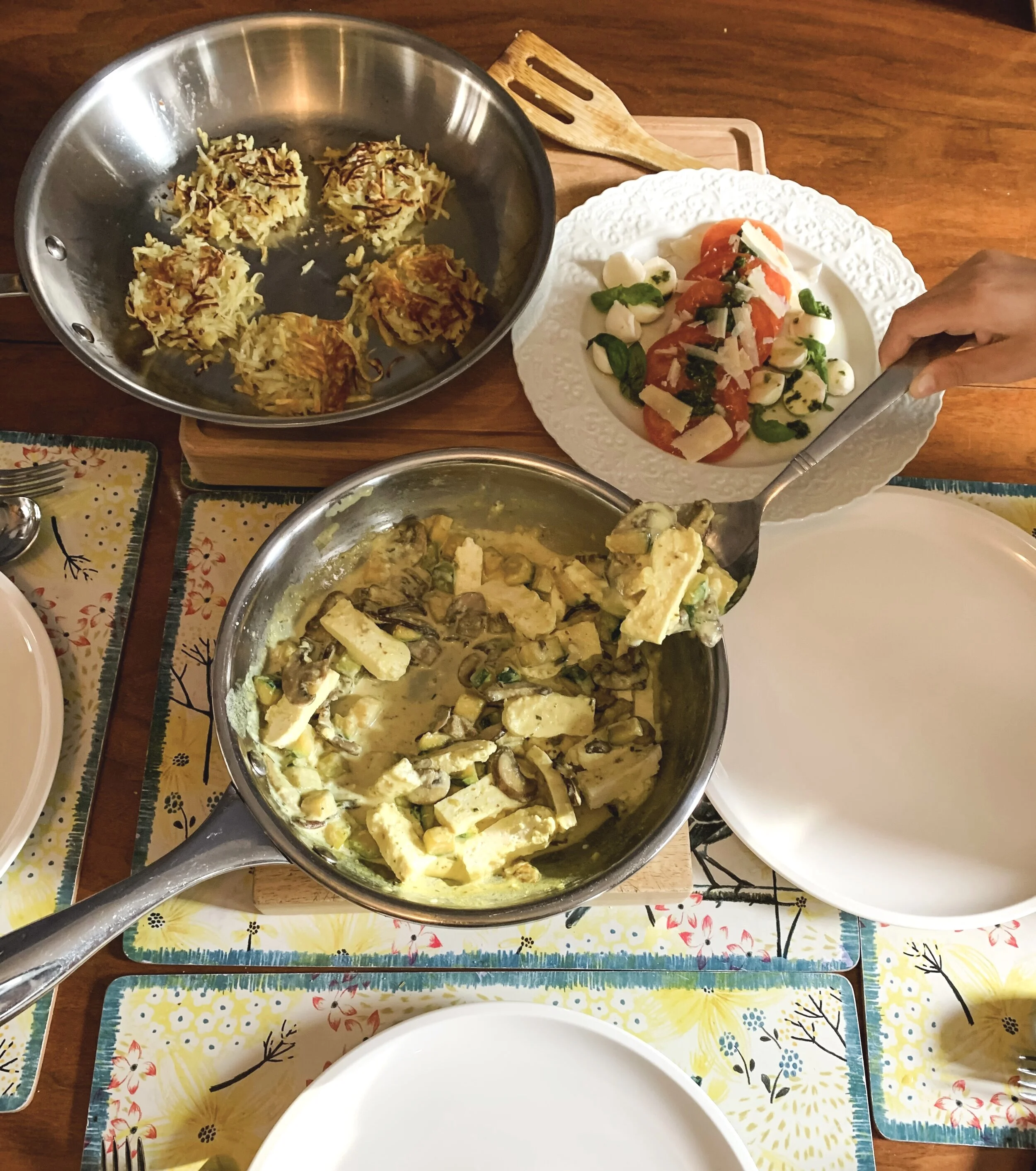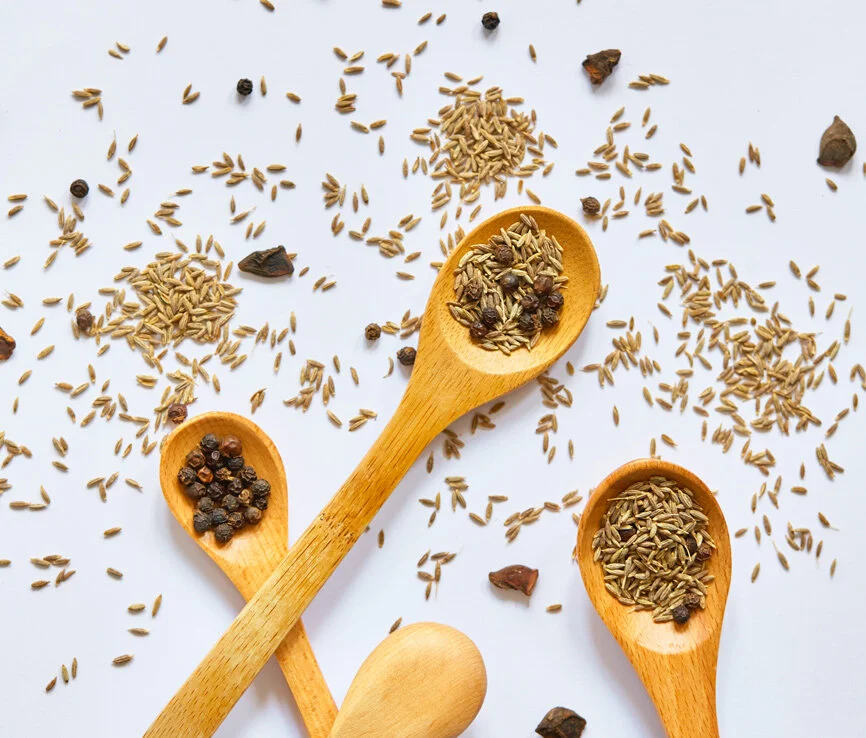Ayurveda. Meet Zürcher G’Schnatzlets
WELCOME TO MY BLOG! I’M EVANGELINE & A MOM. ALSO, AN RMT, and AYURVEDA-YOGA COUNSELLOR. I STARTED MY BLOG DURING COVID TO STAY CONNECTED TO MY CLIENTS AND SHARE MY LOVE OF COOKING HEALTHY, AYURVEDIC MEALS.
AYURVEDIC COOKING TAKES A BALANCED, HEALING APPROACH FOR YOUR DAILY COOKING NEEDS. YOU WILL FIND SIMPLE, EASY TO MAKE NOURISHING MEALS I HAVE MADE FOR MY FAMILY, WITH A DOSE OF AYURVEDA & YOGA WISDOM.
A friend recently invited me to join a social media group he started. We all used to work in a very popular downtown Toronto restaurant that was around for decades. I posted if anyone happened to have a copy of the menu, and lo and behold a few days later, I’m scrolling, and there it is! My excitement ushered into mind a gastronomical deluge of colours, textures and aromas of a bustling restaurant kitchen. Even PLU numbers and European muzak- date yourself back to the 90s here, flooded my senses as I examined the menu. It would only be a matter of time before I would share with my family my resto glory days at the dining table.
I decided to make Zürcher G’Schnatzlets as many of the chefs working there came from Germany and Switzerland. The dish was a huge hit this past weekend, so much so, that I think it will make a reprise this holiday season. I have since coined our new dish, Zürcher n’ Paneer. My son said, “I’m so happy you made it!” As with many dishes I make, I integrate Ayurveda into it. So here we go…. If some of you are new to my blog, Ayurveda is a comprehensive ancient health system that means, the “science of life”, originating in India, but has widespread appeal in many countries today. Ayurveda is the sister science to Yoga. Ayurveda can be considered as a comprehensive health manual for the body and Yoga for your mind and soul. Like Yoga, Ayurveda goes back thousands of years. It is based on the principles of nature that includes lifestyle and diet, herbs, body therapies and purification practices to restore balance, in concert with the body’s own innate intelligence. When it comes to cooking, Ayurveda reminds us the importance of using fresh, organic ingredients whenever possible, choosing ingredients that can be digested and compatible in combination with other foods, and choosing which foods to eat dependent on how you feel, the season and time of day.
When I looked into Switzerland’s relationship with Ayurveda, it came as no surprise to me how the Swiss have integrated Ayurveda into their public health system in 2015, the first western nation to do so.*
“Zürcher G’schnätzlets Grüt Farm” as written on the menu, is a traditional Swiss dish of veal in a white wine cream sauce with mushrooms, served with rösti potatoes. Instead of veal, my recipe is with paneer. If you are vegan, tofu would be an option (however, be aware that tofu is channel clogging). Oat milk or almond milk for the sauce, thickened with arrowroot flour is an option. Since we consume dairy, I went with whole milk, 3.8% milk fat, as it was on hand. When I make this again, I will aim for using almond milk. Milk and nightshade vegetables are not compatible when eaten together. I added zucchini and rosemary to the sauce, as they are favourites here. Zucchini is a gentle, cooling type of vegetable and is rich in antioxidants, vitamins and minerals, like magnesium, potassium, Vitamin A, C, K.* Rosemary, from an Ayurvedic perspective, helps with cellular metabolism (dehagni)*, and connects the heart and mind. Last minute, I also decided to make one of the popular salads on the menu, tomato and shaved parmesan cheese with a vinaigrette lime dressing and pesto. My little guy loves bocconcini, so that was added too. For me, mushrooms and tomatoes are like a “treat”, and same goes for hard cheeses, like parmesan. Mushrooms have a “tamasic” effect, classified as a fungus, and has a dulling effect. Tamas means dull. Tomatoes belong to the nightshade group. The nightshades are a classification of vegetables and fruit which I avoid, and take caution to not have regularly because of their negative effect on the body’s physical and vibrational channels. It gets requested on occasion by my kids! In Ayurveda, nightshades are known as a stambhana food, or have a narrowing effect on the channels.* Other common nightshades include potatoes, bell peppers and eggplant. In following Ayurvedic, specifically SV Ayurveda principles, for years now, nightshades are one of the foods we generally avoid. More research is needed to fully understand the compounds in nightshades, namely the toxic compound solanine, which is related to nicotine found in cigarettes, and we know the negative effects cigarettes have on the body. There was Japanese sweet potatoes on hand anyway, and it has a similar appeal to the off-white colour of most potatoes, so I ended using them to make the rösti, and to my surprise they held together nicely.
Ever since Ayurveda was introduced to me decades back it has enriched my whole life on every level, and especially in the kitchen. Ayurveda has given me and my family a wealth of knowledge, guiding us to make conscious health choices. There is always some experimenting going on in our kitchen as the marriage of the science and art of cooking come together with love for creation, balance and flavour. It can be quick a snack or drink, or other creations that need more time, like yoghurt or ghee. I find comfort in knowing and understanding the qualities and effects of foods and herbs on the body and mind, which then provide me with clear choices in deciding what foods to prepare, and when, and why according to how someone is feeling, the time of day or the season. Since opening up my kitchen to the world of Ayurvedic cooking, particularly SV Ayurvedic cooking, our lives have been enriched on all levels, physically, mentally, emotionally and spiritually.
Zürcher n’ Paneer with Japanese Sweet Potato Rösti
Serves 2-3
Prep Time: 45 min
Cook Time: 20 min
If you make paneer on your own add another 20 minutes to the prep time. See recipe on how to make paneer.
Ingredients
200 grams paneer cut in strips
1 medium zucchini cubed
8 mushrooms sliced- I used cremini and shiitake
1 ½ cups organic whole milk or grain milk or almond milk
2-3 tsps flour or 1 tsp arrowroot or tapioca flour- to help thicken- a bit more if using a grain or almond milk
2 tsps ghee or butter for the sauce + more for sautéing the zucchini and mushrooms
1 tsp of olive oil (or ghee) to fry the rösti with
2 tsps rosemary leaves, finely chopped
1 tsp spice mix (combination of fennel, coriander & seeds crushed and turmeric powder) Recipe down below.
½ tsp sea salt or Himalayan salt
1 large Japanese sweet potato
Instructions
Prepare the rösti-
Place the Japanese sweet potato in a shallow baking dish and bake in a pre-heated oven at 375°F / 190°C for 30 minutes. Potato should not be soft and too cooked. Let cool for 15 minutes, peel off skin, cut in half and grate. Transfer the grated sweet potatoes in a bowl and add a pinch or two of salt and mix all together. Set aside.
Prepare the sauce and paneer part-
In a large fry pan, on medium heat, melt ghee or butter.
Add milk, rosemary and spices and start to whisk all together.
Add flour or starch to thicken and make a creamy consistency
Toss in paneer strips and mix all together for a few minutes. Turn stove down to very low and set aside.
In a medium-size sauce pan on medium heat cook mushrooms in ghee or olive oil until softened, then add in zucchini and cook a few more minutes.
Combine the cooked mushrooms and zucchini with the creamy sauce and paneer. Stir in the salt and set aside, covered on low heat, while the rösti cooks.
Cook the rösti- In a large fry pan, heat some ghee or olive oil on medium heat. Shape a spoonful or two of grated sweet potatoes into a ball and flatten as you place them in the pan. Cook for about 2-3 minutes on each side. Careful when flipping it. I had to use two spatulas at times to flip it over. :)
Enjoy!
Spice Mix Recipe
My go-to spice mix I learned from my Ayurvedic teacher Vaidya Mishra. These spices are available in just about any grocery store and not only adds flavour to any dish, but also aids in digestion and absorption of nutrients. Seeds remain fresh longer than ground spices.
6 tsps fennel seeds
6 tsps coriander seeds
1 tsp cumin seeds
1 tsp turmeric powder
Grind or crush fennel, coriander and cumin.
Mix in turmeric powder.
Store in a jar with a lid in a cool place. Keeps for 4-6 weeks.
*References
Journal of Family Medicine and Primary Care- Case Report on solanine toxicity, 2022
Vaidya R. K. Mishra- Notes from Shaka Vansiya Ayurveda Courses, Practicum, Conferences and Lectures 2003-2015
Marianne Teitelbaum- “Healing the Thyroid with Ayurveda”, 2019
https://nutritiondata.self.com/facts/vegetables-and-vegetable-products/2639/2



